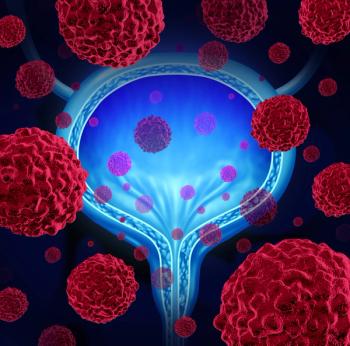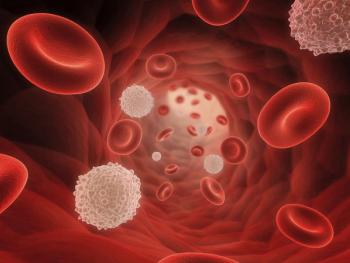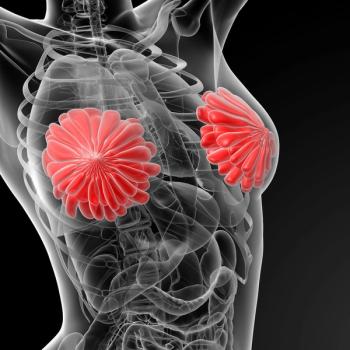
Evorpacept Elicits Favorable Responses in HER2+ Gastric/GEJ Cancer
Phase 2 results show clinical responses and survival benefits in patients with confirmed HER2-positive expression in gastric/gastroesophageal cancer.
A CD47 myeloid checkpoint inhibitor, evorpacept (ALX148), in combination with trastuzumab (Herceptin), paclitaxel, and ramucirumab (Cyramza; TRP) elicited favorable survival outcomes and responses compared with TRP alone in patients with HER2-positive gastric or gastroesophageal junction (GEJ) cancer, according to findings from the phase 2/3 ASPEN-06 trial (NCT05002127) highlighted in an oral presentation the
Efficacy findings from the trial revealed that the confirmed objective response rate (ORR) was 41.3% (95% CI, 29.0%-54.4%) in the evorpacept combination arm vs 26.6% (95% CI, 16.3%-39.1%) with TRP alone. In the respective arms, 1.6% and 1.6% of patients achieved a complete response, and 39.7% and 25.0% achieved a partial response. Additionally, the median duration of response (DOR) was 15.7 months (95% CI, 7.7-not reached [NR]) with evorpacept plus TRP and 9.1 months (95% CI, 5.3-NR) with TRP alone.
The median progression-free survival (PFS) was 7.5 months (95% CI, 5.5-12.9) with the investigational regimen and 7.4 months (95% CI, 4.6-9.0) with TRP alone (HR, 0.77; 95% CI, 0.49-1.20). Additionally, HER2–positive expression confirmed via fresh biopsy conferred bolstered antitumor benefit, with an ORR of 59.1% (95% CI, 36.4%-79.3%) in the evorpacept arm vs 23.1% (95% CI, 9.0%-43.6%) in the TRP arm and a median DOR of 15.7 months (95%, 4.0-NR) vs 14.5 months (95% CI, 7.4-NR), respectively.
“[Evorpacept plus] TRP showed promising activity for patients with HER2–positive gastric and GEJ cancer with a response rate above 41.3% compared with 26.6% with TRP alone,” Kohei Shitara, MD, director of the Department of Gastrointestinal Oncology at National Cancer Center Hospital East in Kashiwa, Japan, said in the oral presentation.1 “The benefit of [evorpacept] was especially [observed] in patients with confirmed HER2–positive [expression] in fresh biopsy or ctDNA, in that its mode of action was able to enhance the activity of trastuzumab. This efficacy, as well as acceptable safety profile, support the further development of [evorpacept plus] TRP in patients with gastric and GEJ cancers.”
The intent-to-treat (ITT) population included patients with HER2–positive gastric or GEJ cancer who progressed on 2 or 3 previous lines of HER2-directed therapy (n = 127). Patients were randomly assigned 1:1 to receive either evorpacept in combination with TRP (n = 63) or TRP without evorpacept (n = 64).
Dosing in the evorpacept arm consisted of 30 mg/kg of intravenous evorpacept twice weekly, 6 mg/kg then 4 mg/kg of trastuzumab twice weekly, 8 mg/kg of ramucirumab twice weekly, and 80 mg/m2 of paclitaxel on days 1, 8, and 15 of a 28-day cycle. Dosing in the TRP only arm consisted of the same dosing without evorpacept.
The median ages of patients in the investigational and control arms were 64 years (range, 34-81) and 63 years (range, 31-86), respectively. Patients were primarily Asian (49.2% vs 48.4%), or White (30.2% vs 29.7%), and most patients had an ECOG performance status of 1 (52.4% vs 57.8%). Furthermore, the most common type of cancer in either arm was gastric (76.2% vs 68.8%), most patients received second-line therapy (77.8% vs 68.8%), and most patients had a HER2 status of IHC 3+ (82.5% vs 82.8%).
The phase 2 primary efficacy end point was ORR over an assumed historical control of 30% and over internal control.2 Secondary end points included DOR, PFS, and overall survival.
Among patients with HER2-positive disease confirmed via fresh biopsy or ctDNA positivity, the confirmed ORR was 48.9% (95% CI, 34.1%-63.9%) in the evorpacept arm vs 24.5% (95% CI, 13.3%-38.9%) in the TRP only arm. Additionally, the median DOR in this subgroup was 15.7 months (95% CI, 7.7-NR) vs 9.1 months (95% CI, 3.5-NR), respectively.
Among those with a HER2-positive fresh biopsy (n = 48), the median PFS was 9.5 months (95% CI, 5.4-19.5) with evorpacept plus TRP vs 7.1 months (95% CI, 2.9-9.1) with TRP alone (HR, 0.62; 95% CI, 0.28-1.36). Of those with a HER2-positive biopsy or ctDNA positivity (n = 96), the median PFS was 7.5 months (95% CI, 5.5-14.7) and 6.7 months (95% CI, 4.0-9.0) in each respective arm (HR, 0.64; 95% CI, 0.39-1.07).
The most common grade 3 treatment-emergent adverse events (TEAEs) in the investigational and control arms included decreased neutrophil counts (both 19.0%), anemia (22.2% vs 17.5%), neutropenia (17.5% vs 11.1%), and hypertension (9.5% vs 6.3%). There were 11 grade 5 TEAEs, 2 of which were related to treatment and included individual occurrences of esophageal perforation and pneumopathy.
References
- Shitara K, Wainberg Z, Tabernero J, et al. Final analysis of the randomized phase 2 part of the ASPEN-06 study: A phase 2/3 study of evorpacept (ALX148), a CD47 myeloid checkpoint inhibitor, in patients with HER2–overexpressing gastric/gastroesophageal cancer (GC). J Clin Oncol. 2025;43(suppl 4):332. doi:10.1200/JCO.2025.43.4_suppl.332
- A study of evorpacept (ALX148) in patients with advanced HER2+ gastric cancer (ASPEN-06). ClinicalTrials.gov Updated September 19, 2024. Accessed January 23, 2025. https://tinyurl.com/yzf33xdk
Newsletter
Stay up to date on recent advances in the multidisciplinary approach to cancer.

















































































